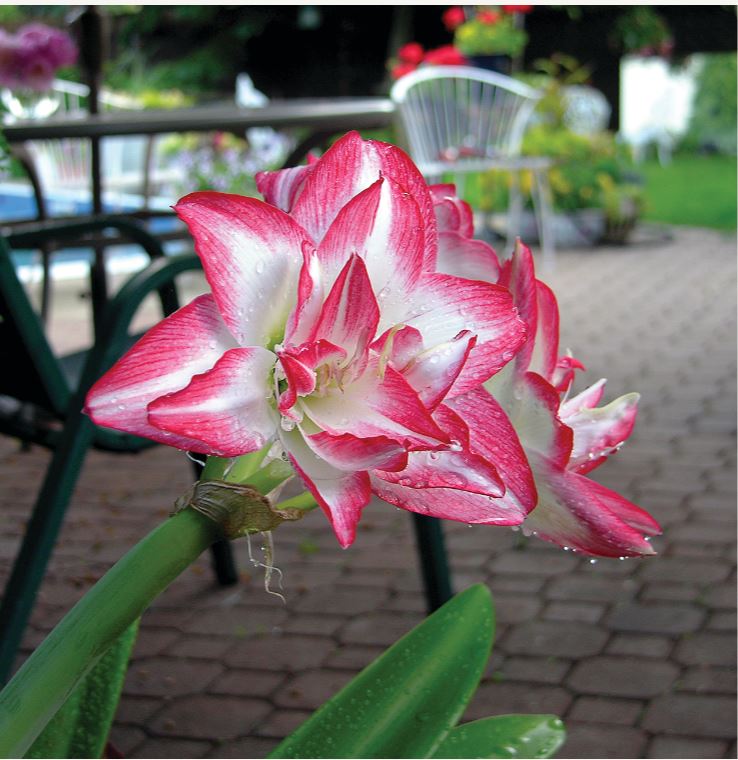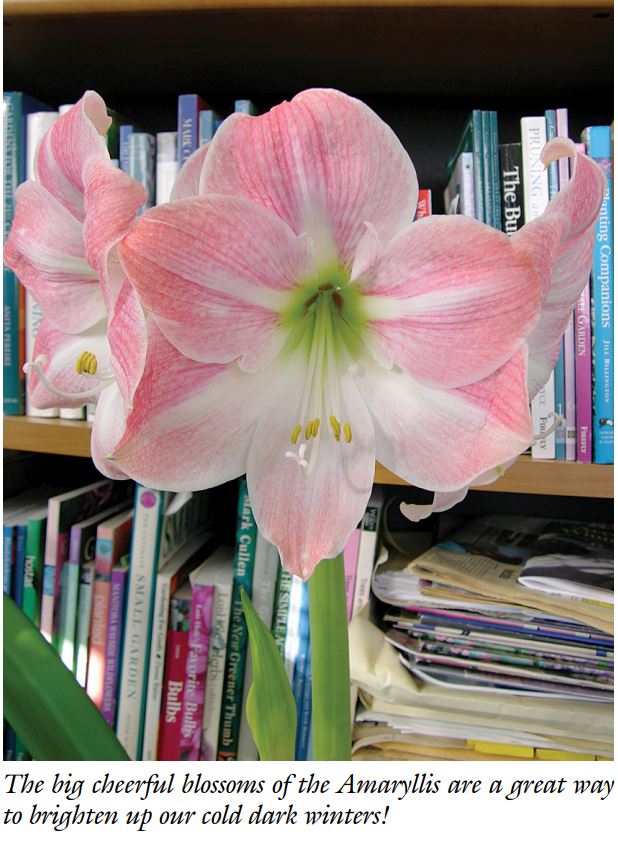1. What is it really?

Amaryllis is the 2023 Bulb of the Year. Nonetheless, the big, voluptuous blooms in red, white, pink or candy-stripes have returned to the glory of their Victorian conservatory days. But guess what? Amaryllis is really not Amaryllis. It is classified as Hippeastrum. Technically, Amaryllis is the Latin name for a plant called the belladonna lily, which somewhat resembles our blowsy bulb, which we will continue to call amaryllis for this article.
2. From Mexico via Holland.
Amaryllis is native to Mexico, but it didn’t come to Canada as a cultivated ornamental directly from
there. It went to Holland first. It seems a roundabout route, but the Dutch were and are the world
masters at hybridizing bulbs, and they worked their magic on amaryllis before it found its way to Canada
in the 18th century.
3. The plant that never sleeps.
Many bulbs, like tulips and paper whites, need a cold dormant period before they can bloom, but amaryllis doesn’t. You can force an amaryllis into dormancy by keeping it at about 5° Celsius; then you can bring it out of dormancy to bloom when it suits you. If you never chill it, though, the foliage will stay green and the plant will eventually bloom again.
4. Summer in the sun.
If you prefer to take control over when your amaryllis blooms, here’s what you do. Keep the plant outside in partial sun all summer so the leaves can soak up all the energy possible for the plant to
produce a nice show at bloom time. It helps to sink the pot into the ground to guard against dehydration. Get it back inside before it’s in any danger of frost, then force it into dormancy by keeping it in a dark, cool location with no water for about eight weeks. Depending on the variety, it will take from two weeks to a couple of months to bloom once you bring it out and water it again.
5. The bulbs like it crowded.
If your amaryllis doesn’t come with a pot, choose a pot that is only an inch or two bigger than the bulb.

6. The bulbs get bigger.
Like many of us, amaryllis bulbs increase in girth as they get older, adding about half an inch each year. You’ll need to re-pot every couple of years to accommodate the growth.
7. Not too deep!
The three-times-as-deep-as-height rule you apply when planting bulbs outdoors does not apply to your potted amaryllis. Leave the top third of the bulb poking up above the soil.
8. Should you collect seeds?
You could conceivably collect seeds from your amaryllis and grow new plants, but the exercise is not for the impatient. First, allowing the plant’s energy to go into producing a seed will mean that there is less energy to go into developing the bulb, which means a smaller bloom next year from your parent plant. Second, the baby plant probably won’t look like the parent. And third, it will take up to five years to produce a flower. Not so easy as buying more bulbs, but the botanically inclined aren’t necessarily looking for an easy fix!
9. Is it a dud?
If your plant gets good leaves but doesn’t bloom, give it a second chance before tossing it on the compost heap. Fertilize through the growing period with 20-20-20 and make sure the plant gets optimal light without getting strong, direct sunlight that could scorch the leaves. Then follow the steps in #4 above and chances are you’ll be rewarded.
10. Watering.
Amaryllis bulbs are particularly susceptible to rot if they’re left in clammy quarters. Make sure the pot you use has drainage holes in the bottom. When you first plant the bulb, give the soil a good soaking, letting the excess water drain out into the sink; don’t leave the drainage tray full of water. Take particular care not to water the nose of the bulb. After that first watering, don’t give it anything more until growth shows, and then only when the soil is dry. (If the soil dries out before you see growth then water sparingly.) Once the plant has two nice big leaves on it, go ahead and water about once per week.

